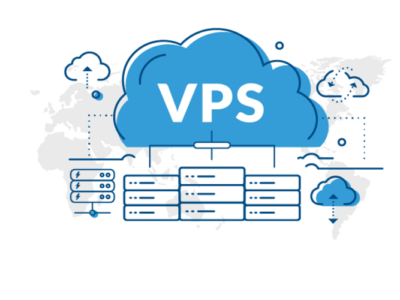In today’s digitally driven world, data is the lifeblood of organizations. The ability to protect and recover data in the event of a disaster is crucial for business continuity and resilience. As more businesses embrace cloud computing, disaster recovery planning is a fundamental component of their migration strategy. The cloud migration services offer unique advantages for disaster recovery, including cost-effectiveness and scalability. In this article, we will explore the importance of disaster recovery planning in a cloud migration strategy, the challenges organizations face, and the best practices and tools to ensure data resilience in the cloud.
The Critical Role of Disaster Recovery in Cloud Migration
- Data Dependency: Modern businesses rely heavily on data to make decisions, serve customers, and operate efficiently. Losing access to this data can result in downtime, financial losses, and reputational damage.
- Increasing Threat Landscape: The digital landscape is fraught with potential disasters, including natural disasters, cyberattacks, hardware failures, and human errors. Disaster recovery planning is essential to mitigate these risks.
- Business Continuity: Maintaining business operations during and after a disaster is a priority. An effective disaster recovery plan ensures that essential functions can continue, even in adverse circumstances.
- Legal and Compliance Obligations: Many industries are subject to regulatory requirements that mandate disaster recovery planning and data protection. Compliance with these regulations is critical.
- Challenges in Disaster Recovery for Cloud Migration
- Complexity: Cloud environments can be complex, with multiple services and components. Managing disaster recovery in such an environment requires a well-thought-out strategy.
- Data Consistency: Ensuring data consistency and integrity across multiple cloud regions or providers can be challenging during recovery.
- Cost Management: While the cloud offers cost-effective disaster recovery solutions, organizations need to optimize resource usage to avoid unexpected costs.
- Testing and Validation: Regular testing of disaster recovery plans is essential but can be difficult to implement effectively in the cloud.
Visit here for: Cloud Engineering Services
Strategies for Disaster Recovery in Cloud Migration
- Assessment and Risk Analysis: Begin by conducting a thorough assessment of your organization’s data, applications, and dependencies. Identify potential risks and prioritize critical assets.
- Choose the Right Cloud Model: Decide whether a public, private, or hybrid cloud model best suits your disaster recovery needs. Public clouds often offer cost-effective solutions.
- Replication Strategies: Implement data replication strategies, such as real-time or periodic replication, to ensure data redundancy in different cloud regions or providers.
- Failover and Failback Plans: Develop clear failover and failback plans that specify the steps to take during and after a disaster. Automate these processes when possible.
- Backup and Restore: Implement robust backup and restore processes for your cloud data and applications. Regularly test and validate these processes.
- Best Practices for Effective Disaster Recovery in Cloud Migration
- RPO and RTO: Define and communicate your Recovery Point Objective (RPO) and Recovery Time Objective (RTO) to set clear expectations for data recovery timelines.
- Redundancy: Use redundancy to ensure data and application availability. This can include multi-region replication, load balancing, and backup systems.
- Monitoring and Alerts: Implement robust monitoring and alerting systems that can detect issues early and trigger automated responses during a disaster.
- Regular Testing: Conduct regular disaster recovery tests to ensure the effectiveness of your plans. Test various scenarios, including partial and complete failures.
- Documentation: Maintain detailed documentation of your disaster recovery plans, procedures, and configurations. Keep this documentation up to date.
- Employee Training: Train your employees on disaster recovery procedures and their roles during a disaster. Ensure they understand their responsibilities.
- Compliance and Legal Considerations: Stay informed about industry-specific regulations and compliance requirements related to disaster recovery. Ensure that your plans align with these obligations.
- Cloud Services and Tools for Disaster Recovery
- Amazon Web Services (AWS):
- AWS Disaster Recovery: Provides a range of services and tools for disaster recovery, including AWS Backup and AWS Disaster Recovery Planning (DRP) tools.
- Microsoft Azure:
- Azure Site Recovery: Offers comprehensive disaster recovery solutions with automated failover and failback capabilities.
- Azure Backup: Provides backup and recovery services for Azure virtual machines and on-premises data.
- Google Cloud Platform (GCP):
- Google Cloud Disaster Recovery: Offers solutions like Google Cloud Storage for data replication and Google Cloud Backup for backup and restore.
- Third-party Tools:
- Veeam: Provides cloud-based backup and disaster recovery solutions compatible with various cloud providers.
- Zerto: Offers disaster recovery and data protection solutions for hybrid and multi-cloud environments.
- Commvault: Provides data management and protection solutions for cloud-based disaster recovery.
Real-world Disaster Recovery Scenarios in the Cloud
- Data Center Outage: If a data center experiences an outage, a cloud-based disaster recovery solution can enable seamless failover to another data center or cloud region, ensuring minimal downtime.
- Cyberattacks: In the event of a cyberattack, organizations can restore their data and applications from clean backups stored in the cloud, reducing the impact of the attack.
- Natural Disasters: Cloud-based disaster recovery can help organizations quickly recover from natural disasters by replicating data and applications to geographically distant cloud regions.
- Human Errors: Accidental data deletion or misconfigurations can be rectified using cloud-based backups and snapshots.
Conclusion
Disaster recovery planning is an integral part of any cloud migration strategy. In an increasingly volatile digital landscape, the ability to protect, recover, and maintain access to critical data and applications is paramount. By carefully assessing risks, implementing redundancy and replication strategies, and leveraging the right cloud services and tools, organizations can ensure business continuity even in the face of unexpected disasters. Disaster recovery in the cloud not only safeguards against potential disruptions but also empowers organizations to continue innovating and growing in a secure and resilient environment.


















Comments